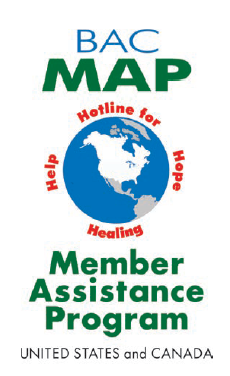Looking at Quality of Life
Quality of life — the perceived standard of health, comfort, and happiness experienced by an individual — is a concept with many dimensions. This perception is evaluated within the context of a person’s value systems, beliefs, and goals. There is a large overlap between quality of life and life satisfaction, which is important to the BAC.

The New Year tends to encourage reflection and inspires enthusiasm around self-improvement, and in consideration that January was International Quality of Life Month, it is important to continue the conversation around overall well-being and what goes into it. In 2021, 76% of workers in the United States reported at least one symptom of a mental health condition — a 17% increase from just two years prior. This data drove the U.S. Surgeon General to release a new framework for employee mental health in October 2022.
In their formal assessment, the World Health Organization defined 24 indicators, subsequently grouped into six larger domains, meant to help measure a person’s quality of life. Those domains include the following (with corresponding indicators):
- Physical — pain and discomfort, energy and fatigue, and sleep and rest
- Psychological — positive feelings, negative feelings, self-esteem, thinking, learning, memory and concentration
- Independence — mobility and working capacities
- Social relationships — personal relationship quality and social support
- Environment — physical safety and security, home environment, financial resources, availability and quality of health and social care, and opportunities for and participation in recreation and leisure
- Belief systems — religious, spiritual and/or personal beliefs
While not a comprehensive list, additional quality of life indicators addressed by other published assessments and scales have included activities related to helping or encouraging other people, creativity and personal expression, sense of burden, and general impairment.
One reason that there is no single comprehensive or exhaustive list of quality-of-life indicators is because the term itself is personally and individually meaningful. In other words, quality of life is as much defined by you, the individual, as it is by scholars or researchers. What is personally meaningful and impactful to and for you, and your ability to cultivate or ascertain these attributes in your own life, will influence the degree to which you will report experiencing a satisfactory quality of life.
It is important to address your quality of life directly and explicitly, and increase clarity around factors that influence your quality of life (both objectively and subjectively). BAC MAP will continue to pursue the fulfillment of our mission to support BAC members in having the greatest possible overall sense of well-being.
If you or a loved one needs help or would like more
information about how to achieve a better quality of life, please call MAP for free, confidential support at 1-833-MAP-TALK, Monday through Friday 8 a.m. to 7 p.m. EST.
